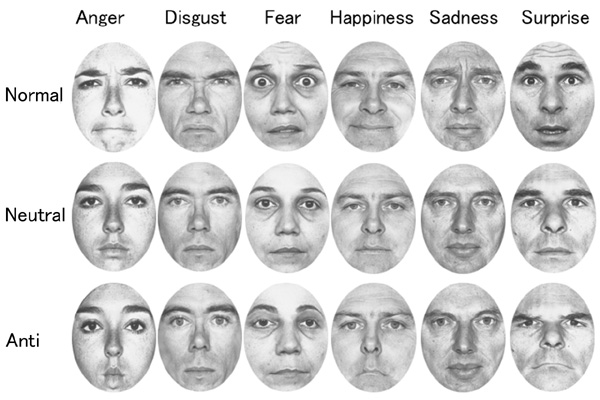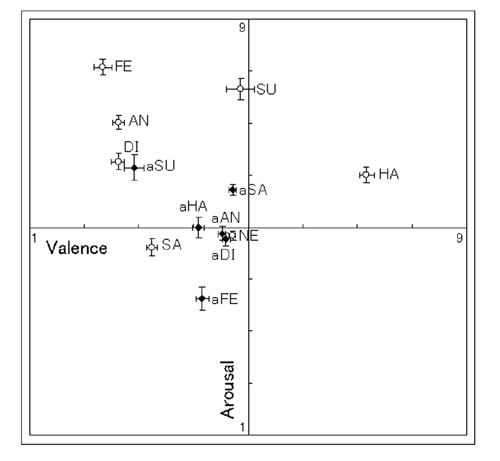SATO Wataru Laboratory
Anti-expressions: Artificial control stimuli for emotional facial expressions regarding visual properties
(Sato & Yoshikawa: Soc Behav Pers)
The perceptual/cognitive processing for emotional facial expressions is effective compared to that for neutral facial expressions.
However, it remains unknown whether this effectiveness can be attributed to the expression of emotion or the visual properties in the emotional facial expressions.
To investigate this issue, we developed a novel form of control stimuli: °»anti-expressions°… produced using computer morphing.
The anti-expressions changed the facial features in emotional facial expressions into the opposite direction from neutral expressions in amounts equivalent to differences between emotional and neutral expressions.
To examine if anti-expressions are usable as emotionally neutral faces, 35 participants were asked to categorize and rate the valence and arousal dimensions for normal and anti-expressions of six basic emotions.

Their responses showed that the most frequent category to describe anti-expressions of all emotions except surprise was °»neutral.°…
The dimensional ratings showed that the ratings were less intense for anti-expressions than normal expressions, which was common to all basic emotions except sadness and surprise.

These data indicate that anti-expressions, specifically for anger, disgust, fear, and happiness, can be used as control stimuli for emotional facial expressions regarding visual properties.
Return to
Recent Research.
Return to
Main Menu.

